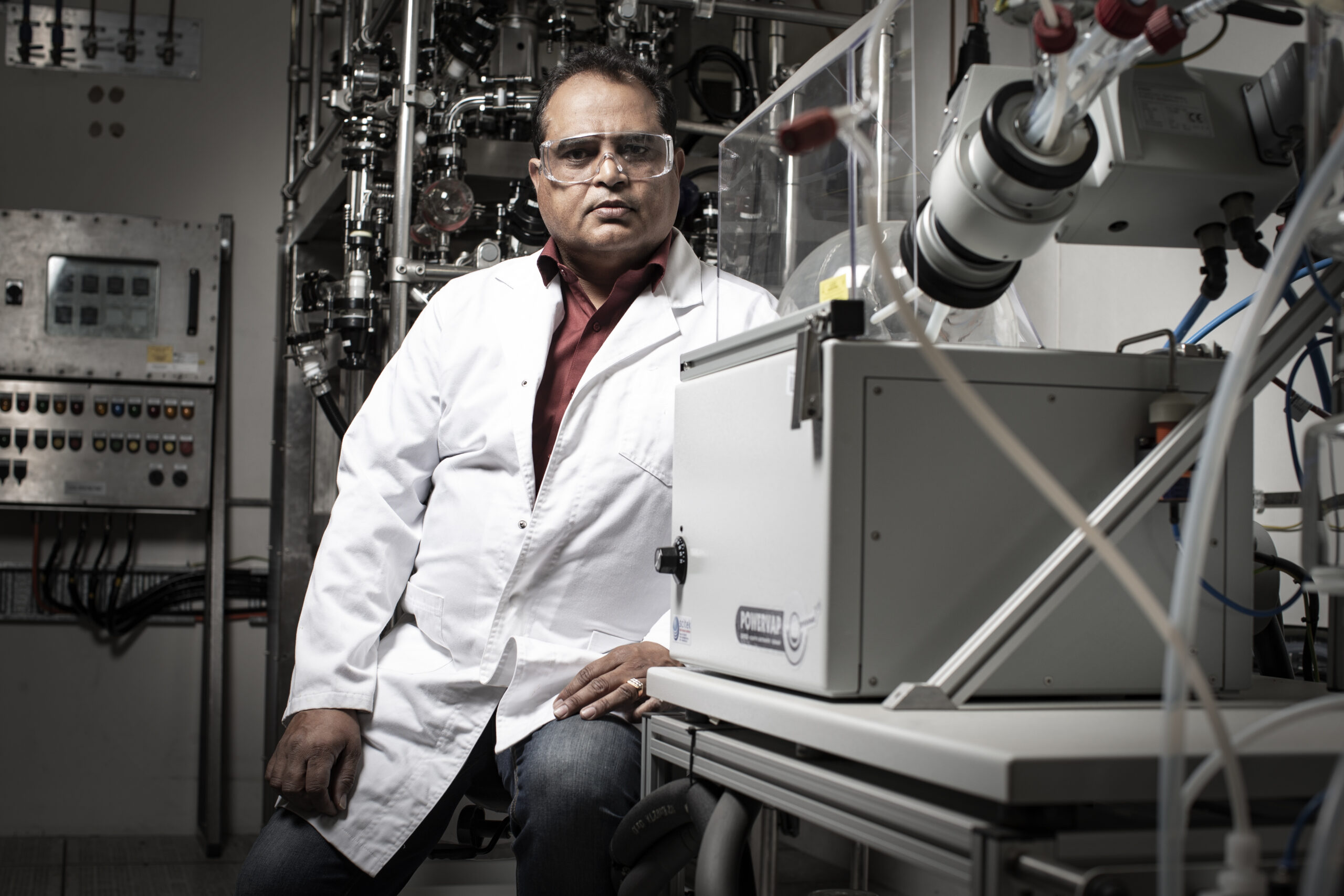News
3D printing bone tissue
Jun 28 2022
Meet Translational Research Initiative for Cell Engineering and Printing (TRICEP) Associate Director, Dr Sanjeev Gambhir.

What is your role at TRICEP?
I am the Associate Director of TRICEP. I am responsible for large scale synthesis of bioinks and ensure that the end products comply with the highest quality standards.
My role also involves sourcing of starting materials of desired specification from commercial manufactures and its quality control. As these bioinks are tailored to specific applications, establishing protocols for carrying out the shelf life study and establishing best storage conditions and developing suitable packaging for its delivery to the end-users is also my responsibility. These bioinks are also used for 3D bioprinting and for biomedical applications where compliance with the regulatory requirements is important. Therefore, I am responsible for creating documents and to comply with ISO 13485 quality management systems requirements and follow good manufacturing practices.
What is your area of expertise and what kind of experience do you have in this area?
I am a synthetic organic chemist and have worked for many years with R&D laboratories of pharmaceutical and fine chemical industries, including Dyesol Australian and Diichi-Sankyo (Ranbaxy) India. I have also worked in academic research laboratories in New Zealand and Australia on projects involving nanostructured carbon materials and conducting polymers.
My area of expertise is organic synthesis, involving complex chemistries and handling of equipments for material characterisation. I have expertise in translating material processing capabilities from laboratory to pilot scale operation, while ensuring the quality and efficiency of the operation. I am also experienced in monitoring critical parameters and modifying the equipment specifications and automation, as required for safe operation at every step of processing. My expertise is to look at every aspect in-view of techno economic feasibility of the process.
What are some of the projects and collaborations you are currently working on at TRICEP?
I am a part of a number of projects at TRICEP. These include our collaboration with Professor Peter Choong from St Vincent Hospital Melbourne for developing bioinks for cartilage repair, as well as with Venus Shell Systems for modifying ulvan polysaccharide and its use for wound healing applications.
In the past, we have also been providing bioinks for a project with Professor Payal Mukherjee for 3D printed living ears and for another project with Professor Toby Coots for 3D printing with islet cells for addressing diabetes.
More recently, we reached a research agreement with ASAN Medical Centre for the supply of bioinks for 3D printing. Our end-user base for the bioinks include Abo Akademi, Finland, Inventia, Gelomics, AMTZ and Yokohama National University. We are also providing starter kits of bioinks and photo-catalyst with every printer supply for education and commercial use.
In addition, we have initiated a collaborative project with AMTZ for developing antimicrobial coating and creating smart face shields for the protection of healthcare workers. We are also collaborating with Big Innovation Laboratories, India for leveraging TRICEP for manufacturing and characterising their bioinks.
Lastly, we have been collaborating with Inventia Life Science Pty Ltd and Professor Fiona Wood from University of Western Australia and have successfully secured funding from Australian Government’s Medical Research Future Fund (MRFF) for developing a 3D bioprinting system for intraoperative skin regeneration.
What is the future outlook of these projects?
As a result of our successful collaboration with St Vincent hospital, we have developed innovative technologies of 3D coaxial bioprinting cell therapies to treat cartilage injuries using bioinks (read more here).
We are taking our bioinks and 3D printing skill to the next level to print layers of ‘ Skin’ directly onto a patient with serious skin conditions using modified bioinks derived from Australian seaweed in collaboration with Venus Shell Systems.
We have also been successful in joint funding with Australian industry and universities that will help to replace painful and invasive procedures of skin grafting and will use the patient’s own stem cells in a bioink that would be inserted into a specialised 3D bioprinter and applied to wound.
How is this work being translated into real applications?
Researchers from University of Wollongong, based at the ARC Centre of Excellence for Electromaterials Sciences (ACES), have had significant success in developing variety of bioinks and formulations suitable for use in 3D bioprinting to treat a range of clinical conditions.
We have been successful in securing funding from the Australian National Fabrication Facility (ANFF) for setting up state of art bioinks and 3D printers manufacturing facility at TRICEP and translating the ACES research to large scale processing of bioinks and formulations and employing technical staff with right skill and experience.
The future for this work is looking very promising.
Contact our TRICEP staff for all enquires here.













